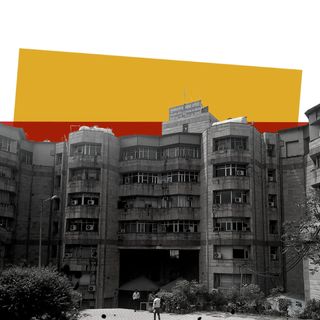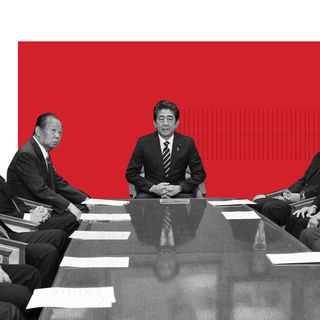Delhi has ordered all government bodies to construct or set aside public bathroom facilities for the sole use of transgender people, designated with a ‘T’ sign, within the next two years. Failing the capacity to do so immediately, bathrooms reserved for use by disabled people should also be designated for use by third-gender people, too, according to the union territory’s annual budget for 2021-22.
The order belatedly follows a 7-year-old ruling by the Supreme Court, which recognized the transgender identity as a third gender and, among other things, called for public facilities to provide third-gender toilets.
Trans people will not be restricted to these bathrooms, however — they are merely an additional option, PTI reports.
“Trans people shall continue to be allowed to use gender-based toilets as per their self-identified gender,” noted the order from the social welfare department, which applies to all of the city’s departments, district authorities, municipal corporations, and autonomous bodies.
Bathrooms have traditionally been a flashpoint in the fight for transgender safety and rights. A trip to a gendered public bathroom for many transgender people is fraught with the potential for embarrassment, jeers, sexual harassment, and assault.
“Most of us are often unable to decide if we should go where we think we should go, or where other people think we should go,” Rachana Mudraboyina, a transgender activist, told Telangana Today in 2017. Regardless of which door they walk through, “we have no other option but to deal with taunts, stares, sniggering, and threats of violence.”
In light of this, a safe, exclusive, but non-compulsory place to complete some of humanity’s most vulnerable acts seems like a step forward in protecting transgender people. But the city’s order runs the risk of further othering an already othered group.
Related on The Swaddle:
What a Transgender‑Friendly Health Care System Would Look Like
“If you think historically, you realize that we’ve always used bathrooms to segregate people,” Sheila Cavanagh, Ph.D., a professor of gender and sexuality studies at York University, in Toronto, told The New Yorker in 2016. “We’ve always used bathrooms to enforce social boundaries.”
While Cavanagh was speaking of the U.S.’s history of racially segregating bathrooms, the point stands in India, where bathrooms, and what happens in them, quite literally underpin the caste system (and increasingly class system), dividing people’s very existence into clean and unclean categories. The official option to adapt bathrooms for people with disabilities — a class of individuals that also faces much stigma due to misguided fears of ‘contamination,’ among other things — to be used by transgender people as well only serves to feed society’s worst stereotypes and misconceptions about both.
In this cultural milieu, it’s difficult to view a trans-specific bathroom mandate as anything other than further marginalization. In fact, critics have blasted the move not only for being too slow a response to the Supreme Court directive but also for being the wrong response. Activists are calling for gender-neutral toilets, rather than third-gender toilets, a move that would be more inclusive as it would address the needs of non-binary people as well as trans individuals.
The Delhi mandate is likely made with good intentions — to comply (albeit belatedly) with the Supreme Court directive, to protect and aid transgender people. But good intentions without thoughtful consideration often only create new problems or deepen existing ones. If Delhi truly wants to support its trans community, it should have considered what is more effective in the long-run: putting up new walls and stalls or breaking down barriers.




